You turn the corner and catch your dog nose-deep in the cat’s bowl. Cue the panic. Can a dog eat cat food? Yes, in a pinch and in small amounts, but not as a regular diet because the nutrition is off for dogs.
Here is the quick why. Cat food is richer in protein and fat, which suits cats, not dogs. Dogs need a different balance of protein, fat, and fiber, plus dog-safe vitamins and minerals. Too much cat food can upset your dog’s stomach and strain organs over time.
In this post, you will get a clear breakdown of the nutritional differences that matter most. You will see what happens right after a raid, the short-term effects like vomiting or diarrhea, and what to watch over weeks and months, the long-term effects like weight gain or deficiencies.
You will also learn what to do if it happens, from simple steps to calm the tummy to signs that mean a vet visit. There is a quick plan to keep bowls separate, feed on a schedule, and block access so it does not turn into a habit.
If you came here worried and asking, can a dog eat cat food, you are in the right place. You will leave knowing what is safe, what is not, and how to prevent repeat raids. Let’s keep your dog healthy, your cat happy, and everyone eating what they should.
Key Nutritional Differences Between Dog and Cat Food
Cats are obligate carnivores, so their food is built like a high-protein, high-fat engine. Dogs are omnivores and do best with a more balanced mix of protein, fat, and digestible carbs. When you ask, can a dog eat cat food, the main issue is not safety in a single bite. It is how the formula fits a dog’s daily needs over time.
Protein and Fat Levels: Why Cats Need More
Cat food often runs hotter than dog food. Think of cat food as high-octane fuel for a sports car, and dog food as regular gas for a family van. Both are “fuel,” but the engines are different.
- Cat food protein is often 30 to 40 percent. Dog food usually sits around 18 to 25 percent.
- Cat food fat is higher to pack calories for energy-hungry cats.
- The calorie density of cat food is higher per cup, which adds up fast for dogs.
Dogs that snack on cat food sometimes are usually fine. Dogs that eat it as a diet face problems:
- Kidney strain from chronic high protein, especially in dogs with early kidney issues.
- Pancreas stress from higher fat, which can raise the risk of pancreatitis in sensitive dogs.
- Weight gain due to calorie-dense meals, even if portion sizes look the same.
Quick check you can do: compare labels. If the first three ingredients in cat food are meat, meat meal, and fat, and the fat percent is above your dog’s usual food, you are looking at a richer formula than your dog needs daily.
Vitamins and Minerals Tailored for Felines
Cat food is fortified for feline needs that dogs do not share to the same degree.
- Taurine: Cats must have taurine in their food to protect heart and eye health. Dogs can make taurine on their own from other amino acids. Extra taurine from cat food does not help most dogs, and long-term use can crowd out the balanced amino acid profile dogs need from their own diet.
- Vitamin A and arachidonic acid: Cat diets use preformed vitamin A and more arachidonic acid. Dogs can convert plant precursors and do not need the same levels. Extra over time can push imbalance.
- Magnesium and minerals: Some cat foods carry higher magnesium. In male dogs, especially those prone to urinary issues, a mineral-heavy diet can raise the risk of crystals or irritation if urine pH shifts the wrong way.
- AAFCO: Both dog and cat foods should meet AAFCO profiles, but the targets are different for each species. Feeding across species long-term means your dog may miss the intended dog-specific balance.
Bottom line for dog owners who wonder, can a dog eat cat food: a nibble is not a crisis, but a steady diet is a mismatch. Think about your dog’s age, weight, and health. Choose a dog formula that hits their protein range, keeps fat in check, and supports steady weight without overload.
Short-Term vs. Long-Term Effects of Dogs Eating Cat Food
When you ask, can a dog eat cat food, context matters. A one-time snack is usually a blip. Making it part of the daily menu is where real trouble starts. Use the quick guides below to know what to expect and how to act.
What to Expect from a One-Time Indulgence
Most dogs that steal a few bites of cat kibble feel fine. The richer fat and protein can still irritate the gut, so watch for mild stomach upset.
Common short-term effects:
- Loose stool or mild diarrhea within 12 to 24 hours
- A single episode of vomiting
- Gas, burping, or a louder tummy
These usually pass with rest and a simple plan:
- Offer fresh water, then small, bland meals if appetite dips.
- Skip heavy treats for a day and monitor stool.
Call your vet if you see red flags:
- Repeated vomiting, bloody stool, or black tarry stool
- Belly pain, a tucked posture, or a tense abdomen
- Lethargy that lasts beyond a few hours
- Refusal to drink or signs of dehydration
It is not ideal for dogs to graze on cat food, even once. Reduce temptation by picking up bowls after meals, placing the cat’s food out of reach, and using lids or containers that latch.
Risks of Making It a Habit
Daily access is a different story. Cat food is dense and fatty, which stacks health risks over time.
Problems linked to routine feeding:
- Weight gain and obesity from extra calories
- Pancreatitis in sensitive dogs due to high fat
- Loose stool, chronic diarrhea, or anal gland flare-ups
- Urinary tract irritation or crystals from mineral shifts
- Nutrient imbalance that crowds out dog-friendly fiber and micronutrients
Smart prevention strategies:
- Feed with barriers. Use a baby gate, tall feeding station, or a microchip cat feeder.
- Time it right. Stagger meals so you can supervise the cat bowl.
- Store smart. Keep cat food in sealed bins, not bags on the floor.
- Train for control. Use a reliable “leave it” and reward with high-value dog treats.
- Match calories. If mix-ups happen, reduce extra snacks and track body weight weekly.
- Read labels. Choose dog food with moderate fat, and avoid free-feeding both pets.
Moderation matters. If your dog only snuck a nibble, you can relax and watch. If it becomes routine, change the setup and talk with your vet before those small slips turn into big health issues.
What to Do If Your Dog Eats Cat Food and Safe Alternatives
A surprise snack is common, and most dogs bounce back fast. The bigger issue is what you do next. If you came here asking, can a dog eat cat food, use this plan to keep your dog safe and avoid repeat raids.
Steps to Take Right After the Incident
Act quickly, keep it simple, and watch your dog closely for a day or two.
- Remove access. Pick up the cat bowl, close doors, and store food in sealed bins.
- Do not induce vomiting unless your vet says to do so. It can cause harm.
- Offer fresh water. A few extra sips help dilute a rich meal.
- Skip heavy treats. Keep meals light and dog friendly for 12 to 24 hours.
- Monitor for 24 to 48 hours. Most mild tummy issues pass on their own.
Call your vet if you notice:
- Repeated vomiting, diarrhea with blood, or black stool
- Swollen or tight belly, pacing, or unproductive retching
- Collapse, seizures, or extreme lethargy
- Refusal to drink, sunken eyes, or dry gums
Helpful tip: keep a bland diet on hand, like plain boiled chicken and white rice. Small portions can settle a mild upset.
Better Food Options to Keep Everyone Happy
Prevention beats cleanup. Set up feeding so both pets eat stress free.
- Separate stations. Feed the cat up high or behind a baby gate.
- Timed meals. Pick up bowls after 15 minutes so there is no grazing.
- Puzzle or slow feeders. These keep your dog busy and reduce bowl raids.
- Vet-approved multi-pet foods. Some brands make formulas that suit both when medical needs allow. Ask your vet first.
- Dog-safe treat swaps. Use low-fat options like carrot coins, green beans, or vet-approved training bites.
If you switch foods, go slow. Mix 75 percent old to 25 percent new for two days, then 50-50, then 25-75, then fully new. A slow transition cuts gas, diarrhea, and refusals.
For dogs with itchy skin or sensitive stomachs, ask about hypoallergenic or limited-ingredient diets. Large breeds, toy breeds, and seniors may benefit from breed size or age-targeted formulas. Personalized advice from your vet keeps nutrition on track while you stop the cat food raids.
Conclusion
The short answer to can a dog eat cat food is yes, but only in a pinch. A few bites are not a crisis. Making it a habit is where weight gain, tummy trouble, and nutrient imbalances appear. Dog food fits a dog’s needs better, with the right protein, fat, fiber, and minerals for steady health.
Keep feeding simple. Separate bowls, pick up leftovers, and store cat food in sealed bins. Use a reliable leave it, and keep mealtimes short and supervised. If your dog has a sensitive stomach or a history of pancreatitis, be extra careful. A small swap today can prevent a big issue later.
Have questions about your dog’s diet, body condition, or health risks? Call your vet and review your current food, portions, and treats. Ask about safe alternatives if your home has both pets. A quick plan keeps everyone on track.
Your turn. Share what has worked in your home, from feeding setups to training tips. Your experience can help another pet parent avoid repeat raids. Thanks for reading and caring for your crew.
- Related post: Simple Tricks for Stopping Hiccups in Dogs
Dog Eating Cat Food: Frequently Asked Questions
Can dogs eat cat food?
Yes, small amounts are usually safe. Cat food is richer and higher in protein and fat. It is not balanced for dogs and should not replace dog food.
What happens if my dog eats cat food once?
Most dogs are fine after a small snack. You might see soft stool or gas. Offer water and monitor for vomiting, diarrhea, or lethargy.
Is cat food bad for dogs long term?
Yes. It can lead to weight gain, GI upset, and pancreatitis in prone dogs. It also lacks the right balance of nutrients for dogs over time.
Why is cat food different from dog food?
Cats need more protein, fat, and certain amino acids. Cat food is built for feline needs, not canine needs. Dogs need different fiber, vitamins, and minerals.
Can puppies eat cat food?
Avoid it. Puppies need precise calcium, phosphorus, and energy levels. Cat food can upset growth balance and upset their stomach.
Can senior dogs eat cat food?
Best to avoid. Higher fat can strain the pancreas. If your dog has kidney, liver, or heart disease, the richer formula can be risky.
Can cat food cause pancreatitis in dogs?
It can trigger it in susceptible dogs due to higher fat content. Watch for vomiting, belly pain, hunched posture, and lethargy. Call your vet if you see these signs.
Is wet cat food safer than dry cat food for dogs?
Neither is ideal for dogs. Wet cat food is often richer and can cause diarrhea. Dry cat food is still unbalanced for dogs.
Can I mix cat food with dog food?
No, not as a routine. It dilutes the balance of a complete dog diet and adds excess fat and protein.
Are cat treats safe for dogs?
Occasional small bites are usually fine. Do not use them as regular treats or meal replacements due to richness and sodium.
How much cat food is harmful for a dog?
A few bites are rarely an emergency. A full meal can cause GI upset; in some dogs it can trigger pancreatitis. Size of the dog and health history matter.
What should I do if my dog ate a lot of cat food?
Remove access, offer water, and skip or reduce the next meal. Watch for vomiting, diarrhea, abdominal pain, or bloating. Contact your vet if symptoms appear or your dog has a history of pancreatitis.
Can dogs be allergic to cat food ingredients?
Yes. Common triggers include chicken, beef, dairy, and fish. If your dog has known food allergies, keep them away from cat food.
Is prescription cat food dangerous for dogs?
Do not let dogs eat it. Prescription diets are formulated for specific feline conditions, like kidney disease or urinary issues. They can be inappropriate for dogs.
Can cat food harm a dog’s kidneys?
Long-term feeding is not advised. Some cat foods are higher in protein and minerals, which is not ideal for dogs with kidney issues.
How do I keep my dog out of the cat’s food?
Use a baby gate, a microchip cat feeder, or place the bowl up high. Feed pets in separate rooms and pick up uneaten food right away.
Can I use cat food as a high-value training treat?
It is not a good idea. Use dog-safe, high-value options like freeze-dried meat or vet-approved treats.
What should I feed instead if my dog likes cat food?
Try a palatable, complete dog food with higher aroma, like wet dog food. Warm meals slightly, add a splash of warm water, or use a vet-approved topper.
How do I switch a dog back after sneaking cat food?
Offer their regular dog food at the next meal. If the stomach is upset, feed a bland dog-safe diet short term, then resume their normal food. Call your vet if signs persist.


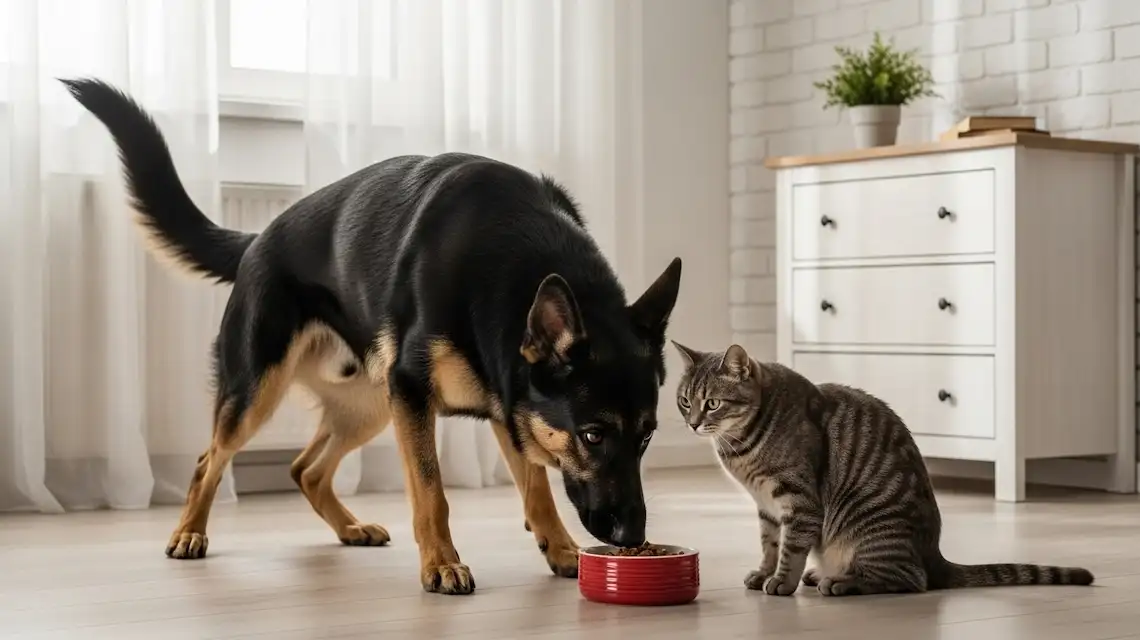
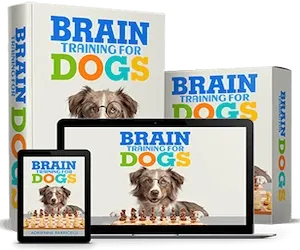
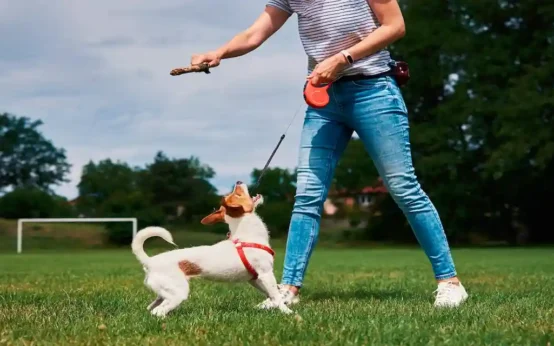 Dog Trick Training for Beginners
Dog Trick Training for Beginners 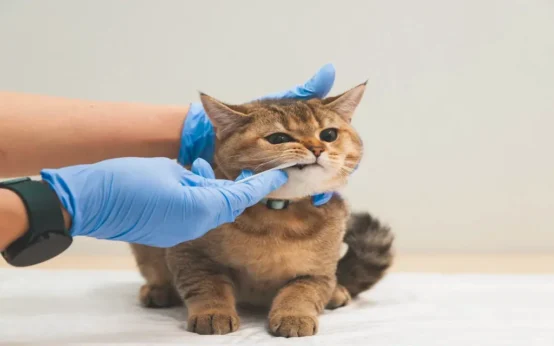 Gingivitis Cats Symptoms Every Pet Parent Should Know
Gingivitis Cats Symptoms Every Pet Parent Should Know  How to Make Dog Cookies at Home
How to Make Dog Cookies at Home  Wet Food or Dry Food for Cats?
Wet Food or Dry Food for Cats? 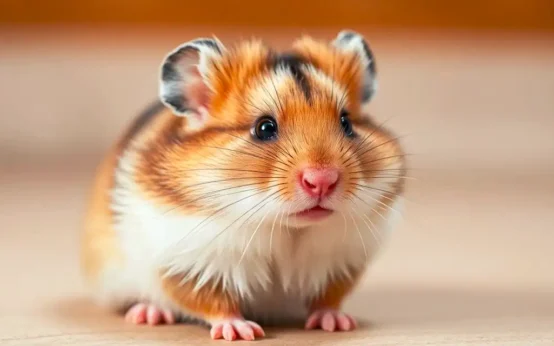 What Is the Healthiest Hamster Breed for Your Home?
What Is the Healthiest Hamster Breed for Your Home? 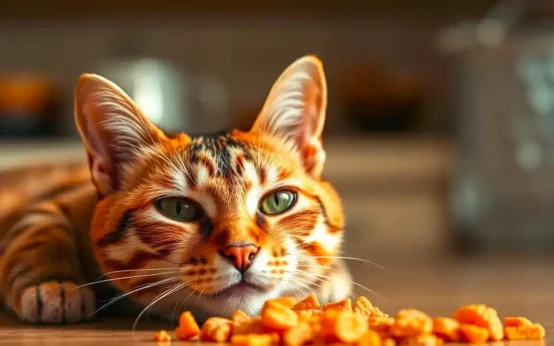 Cat Food Intolerance Symptoms: How To Spot Them Early
Cat Food Intolerance Symptoms: How To Spot Them Early